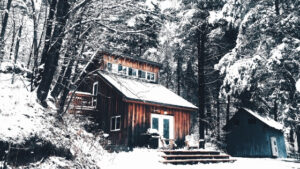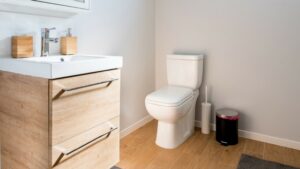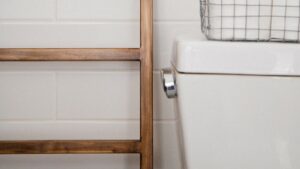[vc_row][vc_column][vc_column_text css=”.vc_custom_1569263090937{margin-bottom: 0px !important;}”]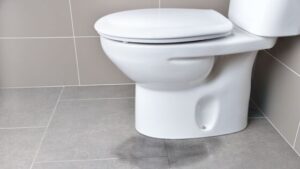 A leaking toilet base can prove to be a big nuisance in the bathroom, especially if it is an old bathroom. A leaking toilet base is an unhygienic problem, and it can make your bathroom look not well taken care of. Another problem is that it can damage your bathroom flooring, and leave stains. To avoid severe water damage arising because of a leaking toilet base, you can address this common plumbing problem by fixing it yourself even if it the first time you are trying your hand at plumbing repairs.
A leaking toilet base can prove to be a big nuisance in the bathroom, especially if it is an old bathroom. A leaking toilet base is an unhygienic problem, and it can make your bathroom look not well taken care of. Another problem is that it can damage your bathroom flooring, and leave stains. To avoid severe water damage arising because of a leaking toilet base, you can address this common plumbing problem by fixing it yourself even if it the first time you are trying your hand at plumbing repairs.
Call Your Local Plumbing Experts
Our team at Tureks Plumbing Services are always ready and happy to assist you with your plumbing problems. If you don’t have time to deal with leaking toilets then give us a call at anytime. Our expert plumbers can analyze and advise you on the problem and the best possible solution for it.
How to Fix Leaking Toilet Base
- Problem identification: To do this, you first need to dry the base, and this can be done by wiping it by a cloth or a towel. After doing this, you need to check all the connections.
- Address the faulty connections: The bolts connecting the tank to the toilet are secured with rubber washers to prevent the water from leaking. Leakage can occur if these bolts have loosened up. Therefore if you find these bolts to be loose, you can tighten them using a screwdriver. Although you should make sure you do not overtighten the bolts because this can cause the tank to crack. You also need to make sure that the toilet is level on the floor because if it is un-level, it might break the seal. If tightening the bolts does not address the problem, then it means that the problem lies somewhere else. In that case, you may need to reach out to for our plumbing services.
- Replace the washers: You might need to replace the washers if tightening the bolts does not solve the problem of a leaking toilet base. The washers might have worn out, and before replacing them, you will first need to stop the water source. After that, remove the bolts, dry the area, and replace the washers.
- Replace the wax ring: If the problem still persists, it is possible it is due to a failed wax ring. The wax ring is not a very expensive replacement and will therefore not cause a serious dent in your pocket. But on the flip side, it might take a few hours of your time to replace as you will have to remove the toilet in order to replace it. After removing the toilet base, you need to remove the old ring and replace it after thoroughly cleaning the surroundings. After this replacement, you can install the toilet back into its original place. If this sounds like too much work, we will gladly do it for you, just fill out a plumbing service request.
- Replace the toilet altogether: If all of the methods mentioned above have failed, there is only one option left, and that is to remove and replace the whole toilet itself.
[/vc_column_text][/vc_column][/vc_row]


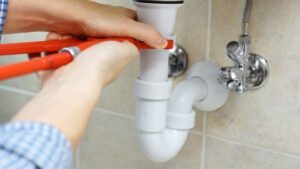 You should be concerned if one or more drains in your home are emitting a gurgling sound each time that drain or another one is used. While the sound can be annoying, it is actually a good thing because it draws your attention to a developing problem. Read on and discover why drains gurgle and what you can do to fix the problem on your own before calling the experts at Tureks Plumbing Services for help.
You should be concerned if one or more drains in your home are emitting a gurgling sound each time that drain or another one is used. While the sound can be annoying, it is actually a good thing because it draws your attention to a developing problem. Read on and discover why drains gurgle and what you can do to fix the problem on your own before calling the experts at Tureks Plumbing Services for help.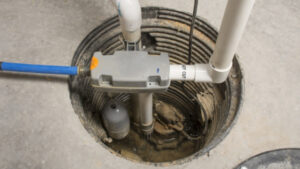 7 Signs You Need to Replace Your Sump Pump
7 Signs You Need to Replace Your Sump Pump